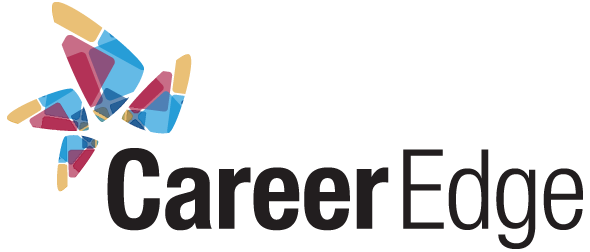National Disability Employment Awareness Month is upon us, a time for reflection and action.
People living with disabilities are hugely under-represented in corporate leadership. A rule change on corporate diversity disclosures in Canada could help change that. But only if the right path is chosen.
At Career Edge, we’re on a mission to promote inclusivity in the workforce. In this article, we’ll share key statistics and actionable steps to encourage employers to hire more people with disabilities.
National Disability Employment Awareness Month
While income disparities continue to exist, with lower educational attainment for individuals with disabilities, in this National Disability Employment Awareness Month, here are a few reminders for employers to aim to achieve.
- Aspiring to diversify the talent pool.
- Driving cultural change within businesses.
- Supporting disabled employees to succeed in the hiring and onboarding process.
- Providing the needed support and accommodations to perform their jobs.
Understanding the Status Quo
While the number of people with disabilities in Canada is significant, their participation in the labour market lags behind that of people without disabilities. The unemployment rate for people with disabilities is consistently higher, making National Disability Employment Awareness Month a crucial opportunity to address this disparity.
To grasp the importance of this mission, let’s delve into the numbers:
- In 2022, the unemployment rate for people with disabilities was 6.9%, nearly double that of those without disabilities, 3.8% (Statistics Canada, 2022)
- The median hourly wages for those with disabilities were 5.5% lower than those without disabilities. (Statistics Canada 2022)
- In 2022, among those with disabilities who were employed, one in five 20.3% worked part-time (not by choice), compared with 16.2% among those without disabilities.
- Nearly 59% of working-age adults with disabilities are employed, compared to around 80% of those without disabilities (Statistics Canada, 2017).
- 1.6 million Canadians with disabilities couldn’t afford the necessary aids, devices, or meds.
- Disability isn’t always obvious. As of 2023, approximately 2.3 million Canadians aged 15 and over are living with severe disabilities that limit their daily activities, according to Statistics Canada.
How Can Employers Help?
Disabilities still represent a barrier for many Canadians in terms of acquiring and maintaining meaningful employment. Recently, the legal and policy landscape has changed in Canada on matters related to disability and inclusion. These policies, such as the Accessible Canada Act and the Disability Benefit Act, are meant to remove barriers and enable more equitable access to employment for those with disabilities.
Overcoming barriers is vital to fostering inclusivity. Here are a few things you can do as an employer when hiring people with disabilities.
Despite limited opportunities, BMO’s 2013 survey found that 77% of employers reported positive results with disabled hires.
National Disability Employment Awareness Month encourages individuals, businesses, and organizations to promote inclusivity and raise awareness about the potential and capabilities of individuals with disabilities. It serves as a reminder that disability shouldn’t be a barrier to pursuing a fulfilling career.
It’s vital to raise awareness about hidden disabilities to promote understanding and empathy within the workplace.
How to be Inclusive of Employees with Disabilities
Accommodations aren’t always met. Statistics Canada’s 2017 survey revealed that workplace accommodations such as flexible work arrangements, workstation modifications, and human or technical support were frequently required. However, the likelihood of meeting those decreased as the number of required accommodations increased. Only 75% of employees with disabilities requiring one accommodation had their needs met, while 36% of those requiring three or more had their needs met.
Embracing accommodations goes beyond ethics; it’s an investment in your organization’s growth and success. To create an inclusive workplace, organizations should consider various strategies:
- Accessible Workspaces: Make physical accommodations like ramps, accessible restrooms, and elevators to ensure everyone can navigate the workspace comfortably. Ensure physical accommodations like ramps, accessible restrooms, and elevators are in place for a comfortable work environment.
- Flexibility: Implementing flexible policies that cater to various needs, such as flexible hours and remote work options.
- Training and Sensitivity Workshops: Educate employees about disabilities, fostering empathy and understanding among colleagues. Training: Offering training on recognizing and accommodating hidden disabilities. The Ontario Human Rights Commission provides resources for employers in this regard.
- Recruitment and Retention Programs: Actively recruit individuals with disabilities and establish mentorship programs to support their career development.
- Mental Health Support: Recognize that disabilities include both visible and invisible conditions.
- Open Communication: Foster open communication within the workplace, where employees feel comfortable discussing their needs and challenges.
- Flexibility and Training: Offer flexible work arrangements and provide training on recognizing and accommodating hidden disabilities.
- Recruitment and Mental Health Support: Actively recruit individuals with disabilities and provide mental health support to all employees.
Resources for Employers
Canada provides numerous resources for building an inclusive workforce, such as
- Career Edge: Connect with us, and we’ll help you find many incredible talents with disabilities and help you navigate the hiring and onboarding process.
- Job Accommodation Service (JAS): JAS, offered by Employment and Social Development Canada, provides valuable resources and financial assistance to help employers make reasonable accommodations for employees with disabilities.
- Provincial Accessibility Legislation: Many provinces, including Ontario, British Columbia, and Manitoba, have introduced accessibility legislation that mandates accessibility standards for businesses and public institutions.
By promoting inclusivity and empowering employees with disabilities to contribute their unique skills and perspectives, you’ll foster a more diverse, creative, and resilient workforce. So, let’s work together to create a Canada where everyone, regardless of their abilities, is celebrated for their contributions and can thrive in the workplace.

